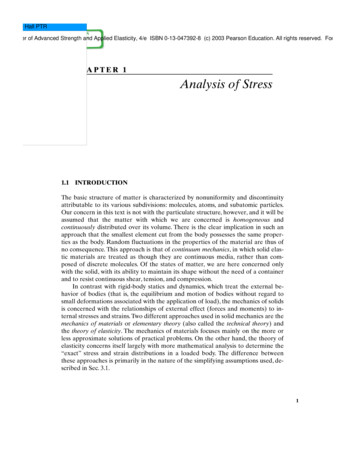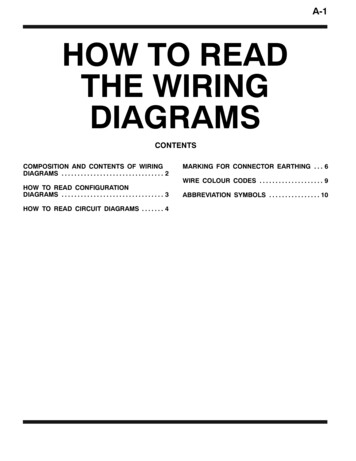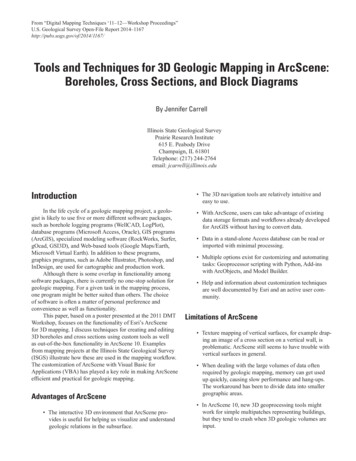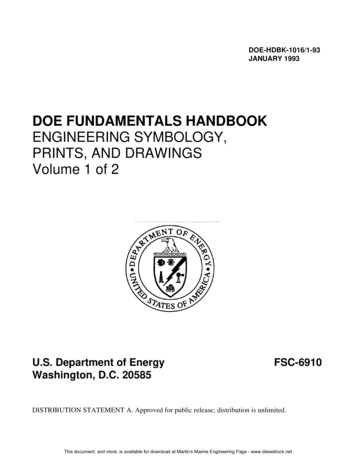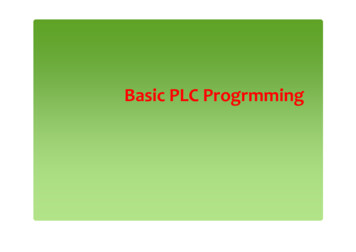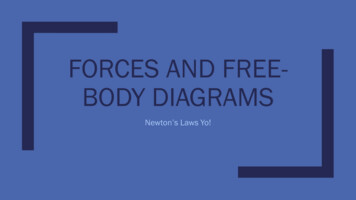
Transcription
FORCES AND FREEBODY DIAGRAMSNewton’s Laws Yo!
Recall: Net Forces Force: any influencethat tends toaccelerate an object; apush or a pull;measured inNEWTONS (N) Net Force:combination of all theforces acting on anobject5NNet Force 10N East5N5N5NNet Force 0N5N10 NNet Force 5N East**FORCE is a VECTOR QUANTITY
– Support Force/Normal Force-the force pushingback on an object at rest. A book sits on the table: What forces act on it?–Force of book on table (due to gravity)–Force of table on book (support force, akanormal force)Bathroom scale: What forces act on it?–Force of you on scale (due to gravity)–Force of scale on you (support force, akanormal force)Gymnast on Rings–Rope undergoes “stretching” force whenhanging by it Two vertical ropes share the load (thinktrapeze, pull ups)
Recall: Friction Friction results from relative motion betweenobjects. Frictional forces are forces that resist or opposemotion. Depends on . 2 surfaces in contact (silk, sand paper ) Normal Force (more weight on top of book Friction
Types of Friction Static friction Sliding (Kinetic)friction Rolling friction
Free-body diagramsFree-body diagramsare used to showthe relativemagnitude anddirection of allforces acting on anobject.
This diagramshows fourforces actingupon an object.There aren’talways fourforces.
Problem 1 A book is at rest on atable top. Diagram theforces acting on the book. In this diagram, there arenormal and gravitationalforces on the book.
Problem 2An egg is free-falling from a nest in atree. Neglect air resistance. Draw afree-body diagram showing theforces involved.
Gravity is the only forceacting on the egg as itfalls.
Problem 3A flying squirrel is gliding (no wing flaps)from a tree to the ground at constantvelocity. Consider air resistance. A freebody diagram for this situation looks like
Gravity pulls down onthe squirrel whileair resistancekeeps the squirrelin the air for awhile.
Problem 4A rightward force is applied to a book inorder to move it across a desk. Considerfrictional forces. Neglect air resistance.Construct a free-body diagram. Let’s seewhat this one looks like.
Note the larger applied force arrowpointing to the right since the book isaccelerating to the right. Frictionforce opposes the direction ofmotion. The force due to gravity andnormal forces are balanced.
Problem 5A skydiver is descending with aconstant velocity. Consider airresistance. Draw a free-body diagram.
Gravity pulls down onthe skydiver, whileair resistancepushes up as shefalls.
Problem 6A man drags a sled across looselypacked snow with a rightwardacceleration. Draw a free-bodydiagram.
The applied force arrow points to the right andis larger than the frictional force since theobject is accelerating. Since the sled is onthe ground, the normal and gravitationalforce are balanced.
Problem 7A football is moving upwards toward itspeak after having been booted by thepunter. Draw a free-body diagram.(Neglect air friction)
The force ofgravity is theonly forcedescribed. (noair resistance).
Problem 8A car runs out of gas and is coastingdown a hill.
The car is coastingdown the hill, there isdragging friction ofthe road (left pointingarrow) as well asgravity and normalforces, but noapplied force.
Done.
FRICTION MATH
What is Friction again? Force that actsoppose the relativemotion of twosurfaces High for dry and roughsurfaces Low for smooth andwet surfaces
Free Body DiagramNormalForce FNAppliedForce FFrictionForce ffGravityForce FgFg mgFN F gff F
Static FrictionThe Force of StaticFriction keeps astationary object atrest!f s FN sFNFfsFg s coefficien t of static friction
Kinetic FrictionOnce the Force of StaticFriction is overcome, theForce of Kinetic Frictionis what slows down amoving object!FNMotionFfkFgf k FN k k coefficien t of kinetic friction
Types of FrictionTo initiate motion of the boxthe man must overcome theForce of Static FrictionI better besafe Ump!!Upon sliding, the baseballplayer will come to acomplete stop due to theForce of Kinetic Friction
Representative values for the coefficient offrictionSurfacesμstaticμslidingrubber on concrete 0.800.65wood on wood0.500.20ice on ice0.100.03glass on glass0.940.40steel on steel0.740.57
Problem 1: How much force is needed tokeep a 78Kg block moving at a constantspeed across the floor if the coefficient offriction b/n the block and the floor is 0.21?
First, find theweight(measure of Fgon an object.)and then findFf.Fw mgFf μFn Fw mg– Fw (78kg)(9.8m/s/s)– Fw 764.4N Ff μFn– Ff (.21)(764.4)–Ff 160.5N
Problem 2: What is the coefficient of frictionb/n a box with a weight of 637N and thefloor if it is pulled at a constant speed witha force of 75N?
Simply solvefor μ.Ff μFn To solve for μ you need only thefriction force and the normal force. Since the box is pulled at aconstant velocity, meaning a netforce of 0N, the Fapp will equal theFf. Thus:– Ff μFn– 75N μ(637N)– μ 0.117 or 0.12
A book sits on the table: What forces act on it? . Draw a free-body diagram showing the forces involved. Gravity is the only force acting on the egg as it falls. Problem 3 A flying squirrel is gliding (no wing flaps) from a tree to
